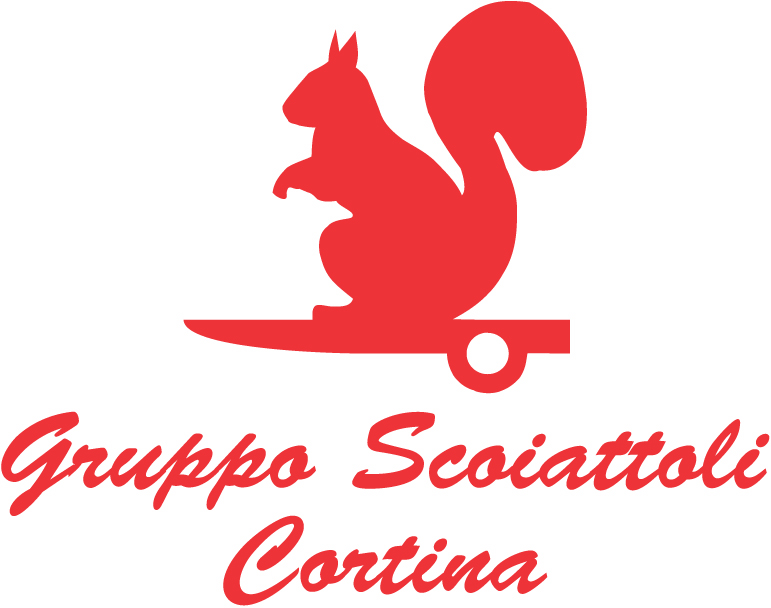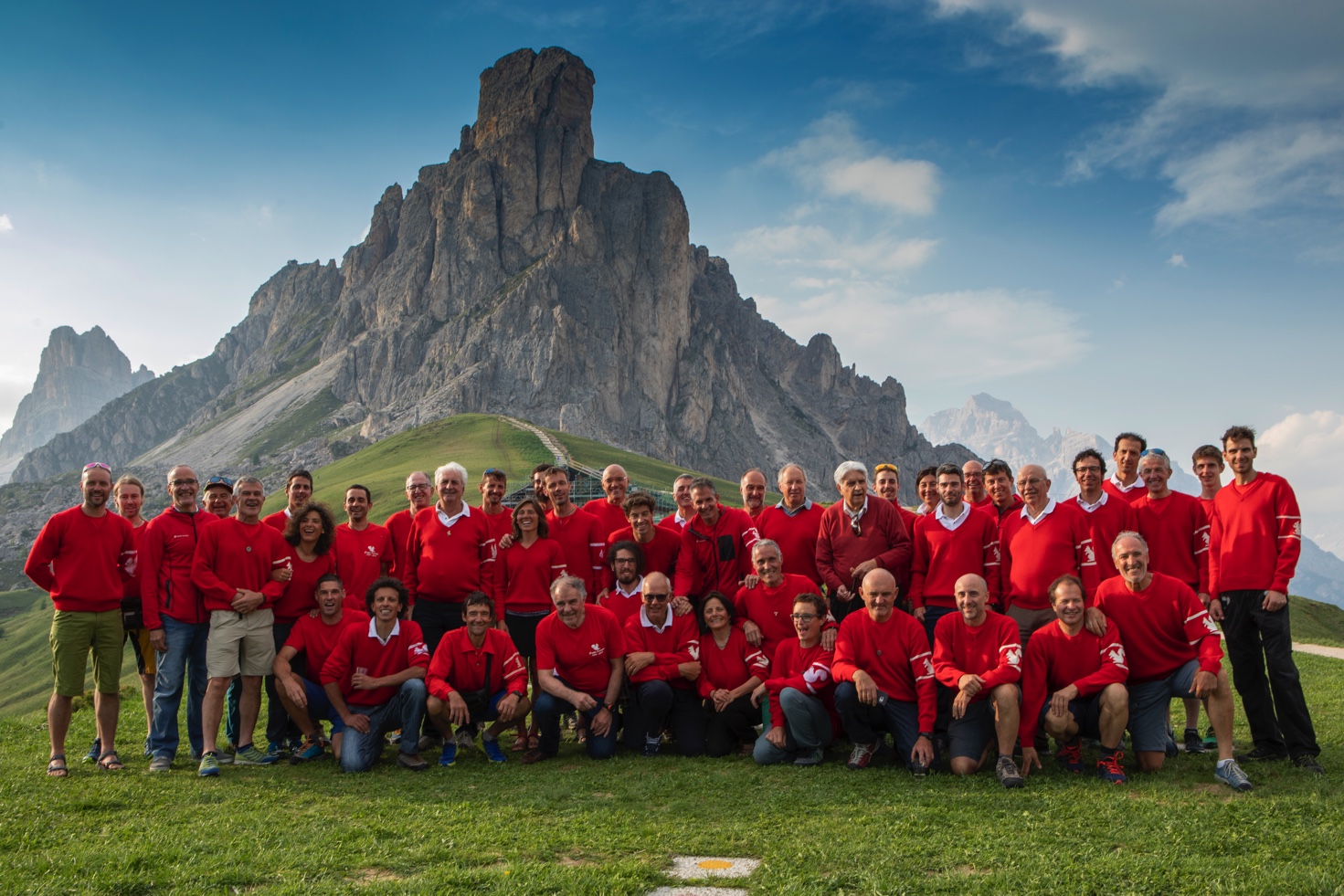History
A passion for mountains, climbing, the Dolomites and their home town. These are the attitudes that have enabled the “Scoiattoli Cortina” Group to retain their identity over the years, becoming a symbol for the Ampezzo Valley.
The Società degli Scoiattoli (“Squirrels Club”) was founded on 1st July 1939 by ten young men from the Ampezzo valley who shared a passion for mountains and sport climbing: Albino Alverà (Boni), Silvio Alverà (Boricio), Luigi Ghedina (Bibi), Romano Apollonio (Nano), Angelo Bernardi (Alo), Ettore Costantini (Vecio), Siro Dandrea (Cajuto), Giuseppe Ghedina (Tomasc), and Bortolo Pompanin (Bortolin). At that time, two requisites were essential for joining the club: Cortina as birthplace and home, and being able to ski. The first name for the group was in fact “Società rocciatori e sciatori gli Scoiattoli” (Squirrels rock-climbers and skiers club).
At that time, while the profession of Mountain Guide grew in popularity as a result of the increasing number of people asking to be accompanied to the peaks in the Dolomites, the idea of adventuring onto the mountains for pure sport began to attract more and more climbers, inducing them to explore new horizons and harder routes. This is the context in which the Scoiattoli Group was formed, in the setting of the Dolomites, a favourite destination for the finest climbers and the location for some of the greatest Alpine challenges. The spirit of the Scoiattoli Group soon spread throughout the Ampezzo valley, and the Squirrel motifbecame not only the emblem of Cortina, but also a famous symbol all over the world. The familiar red jersey with a white squirrel embroidered on the left sleeve soon became a hallmark for climbing in the Ampezzo area. The logo is in fact indissolubly linked to many mountaineering episodes, such as the conquest of K2 (8,611 metres), a hitherto unclimbed mountain, achieved on 31st July 1954 by the “Squirrel” Lino Lacedelli.

The Scoiattoli Group today
Today the Group has over 90 members, all sharing a passion for climbing, and committed to exploring and opening new routes on Dolomitic walls, mountaineering, voluntary rescue work, the enhancement and promotion of climbing sites in Cortina, and the organisation of sports events.
From the Group’s foundation, the “Scoiattoli” immediately won fame for their many mountaineering exploits, opening new routes, above all in the Dolomites, on walls that up until then had been considered as unclimbable. Along with the Ragni di Lecco (the “Lecco Spiders”), the Scoiattoli di Cortina are one of Italy’s most famous climbing clubs. To join this prestigious Group, a climber has to have an important curriculum, even though it is formed of non-professional climbers, in other words, not necessarily Mountain Guides.
Hundreds of routes have been opened by the Scoiattoli Group, in the Dolomites and elsewhere in the world, above all in Greenland, on the Atlas Mountains in Africa, and on Andean and Himalayan peaks. The Scoiattoli Group’s many first ascents include some routes that have become classics: the Costantini-Apollonio route on the wall of the Pilaster of Tofana di Rozes, the Scoiattoli Arête on Cima Ovest di Lavaredo, the Lacedelli route on Cima Scotoni, the First Arête on Tofana di Rozes, the Strobel Arête on Rocchetta Alta di Bosconero, and the routes on Cinque Torri.

